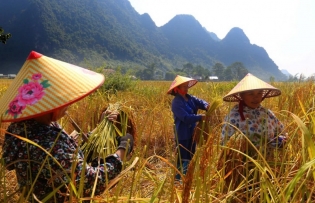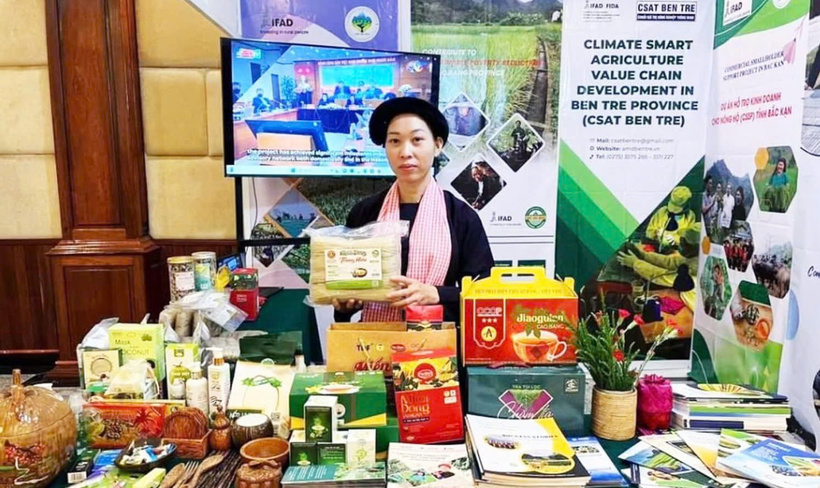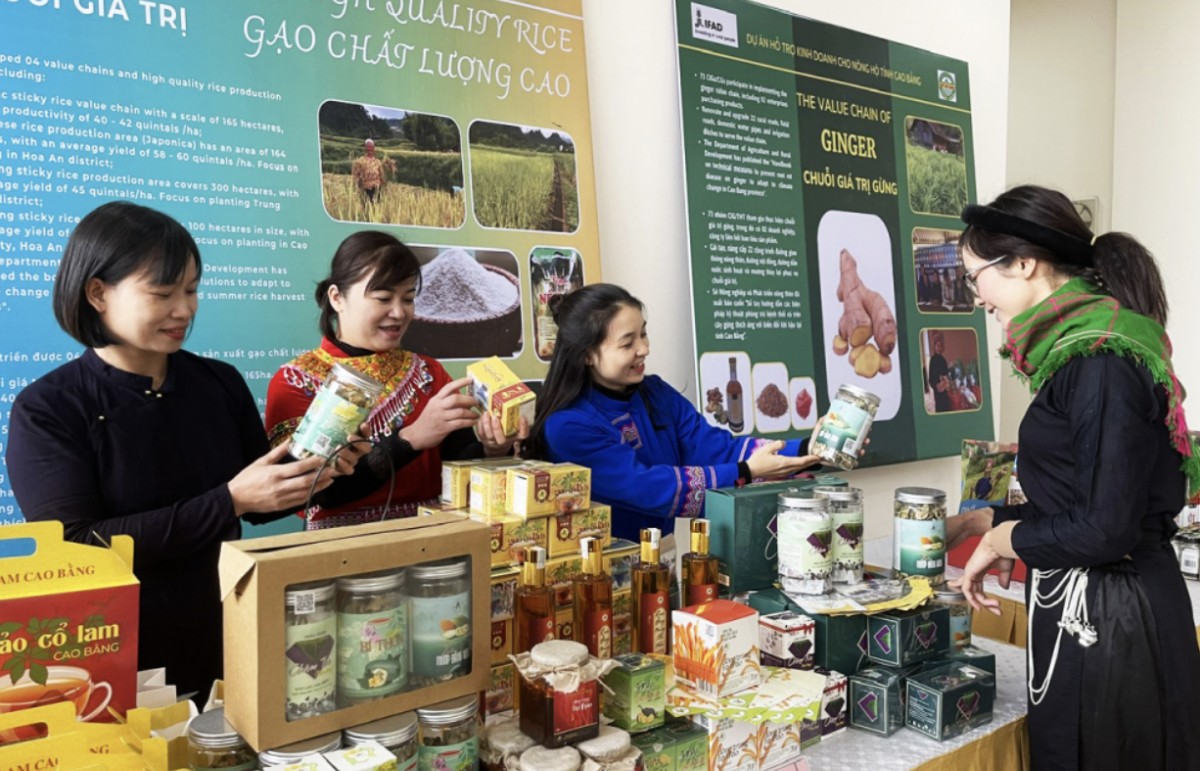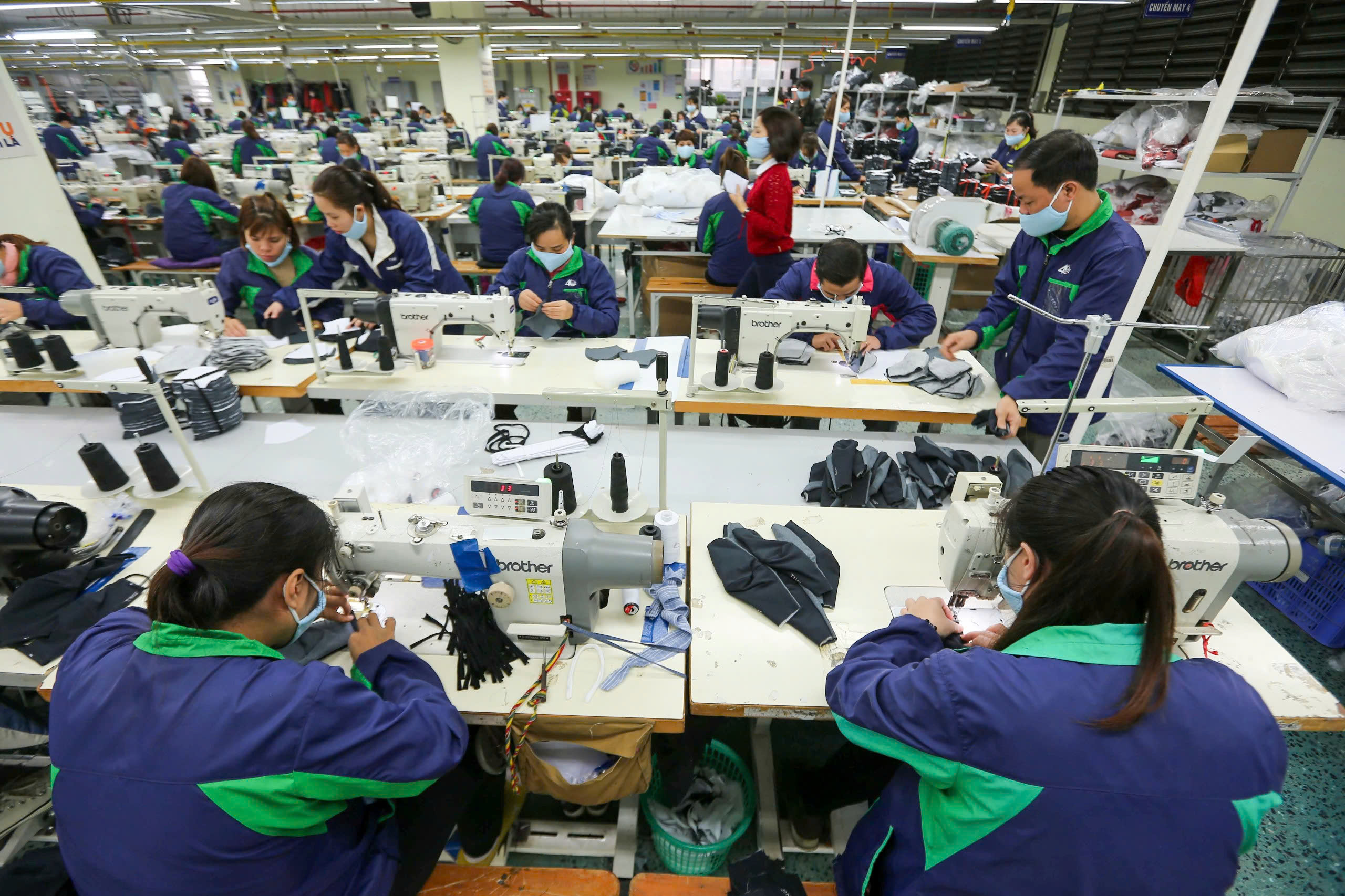
Cao Bang Province diversifies solutions to find markets for local agricultural products
19:05 | 23/03/2025 11:04 | 04/03/2025Trade
From village to market: Steady steps in brand building
Like a fresh stream flowing from the high mountains, distinctive agricultural products from ethnic minority areas are gradually finding their place in the market. Amid a wave of innovation, cooperatives in the mountainous province of Cao Bang are rising up, driven by the desire to win consumer trust through the land’s natural gifts, a unique climate, and the tireless hands of local people.
Tam Hoa Cooperative in Cao Bang City is a pioneering success story. Once relying only on word-of-mouth to sell its signature rock honey and herbal teas, the cooperative has now embraced digital commerce. With training in livestreaming and e-commerce management provided by the Provincial Center for Industry and Trade Promotion, Tam Hoa has brought its local products closer to urban consumers through platforms like ecofarm-pay.com and satra.com.vn. Each shipment now carries more than just agricultural goods, it’s a message: highland communities can build brands and master technology.

From highland cooperatives, the journey to larger markets is fueled by creative, well-organized, and effective trade promotion programs. Photo: BCB
Similarly, from a small household business, Ms. Nong Thi Le Thuy, a Tay ethnic woman in Hong Viet Commune, Hoa An District, has become a brand owner after introducing her grass jelly at a highland market event. From just a few sample packs, she has signed five distribution contracts with clean food chains in Hanoi, Hai Phong, and Tuyen Quang. Her products now feature attractive packaging and proper labeling, and have earned high praise from customers. No longer selling cheaply in local markets, she proudly declares: “We can sell like people in the city, as long as we get the right support at the right time.”
Similarly, Tan Viet A Agricultural Cooperative is now supply arrowroot vermicelli to southern distribution networks, while Xep Hong Cooperative had recently signed three memoranda of understanding to export grass jelly ingredients to China, marking a major leap from small-scale production to official export. Meanwhile, HATODO Co., Ltd. has successfully distributed herbal teas and aromatic sticky rice to provinces in Central Vietnam. These concrete contracts and measurable outcomes are the clearest proof of locally led trade promotion programs's effectiveness.
Local authorities build sustainable market linkages
The success of these cooperatives is the result of a shift in local trade promotion mindset, where authorities have taken on a leading role in guiding, connecting, and shaping markets for highland products. In 2024, Cao Bang Province organized six market fairs to promote products from ethnic minority and mountainous areas, held 14 business capacity-building workshops, arranged market research trips, participated in over 10 trade fairs at home and abroad, and notably hosted the Vietnam-China (Cao Bang-Baise) International Trade Fair with more than 350 booths.
Going beyond traditional trade promotion, the province is pioneering an e-commerce ecosystem built around three key platforms: the portal caobangtrade.vn, the distribution map at caobang.etix.vn, and the virtual fair system at caobang.ifair.vn. These digital tools allow cooperatives and producers to access markets directly without intermediaries, saving costs and promoting products professionally. The combination of traditional trade promotion with digital transformation has helped hundreds of remote production facilities keep pace with modern consumption trends.
More than just sales support, Cao Bang’s trade promotion efforts are also focused on changing mindsets. Many cooperatives and small producers have now learned how to tell their product stories, invest in packaging and labeling, establish their own distribution channels, and take a more proactive role in negotiating with partners. At market fairs, local producers don’t just sell, they also learn how to market, present their products, and even livestream and create promotional videos.

The success of these cooperatives is the result of a shift in local trade promotion mindset, where authorities have taken on a leading role in guiding, connecting, and shaping markets for highland products. Photo: Chu Hieu
However, the transformation still faces challenges. Many cooperatives lack capital for investment in machinery, struggle to meet traceability and packaging standards, and have limited access to digital platforms due to uneven tech skills. Some trade promotion programs have suffered from delayed funding, impacting event timelines and missing critical seasonal opportunities.
To develop highland cooperative models, sustainable policies are needed at both central and local levels. There must be a dedicated, flexible financial mechanism for trade promotion in ethnic minority and mountainous areas. Models like “cooperatives managing their own digital storefronts” should be expanded, with training in digital skills for producers. More regional linkages and specialized, long-term trade fairs are also essential to help highland products expand markets and secure stable sales channels.
According to Be Ngoc Dung, Deputy Director of Cao Bang’s Center for Industry and Trade Promotion, in 2025, the province will continue to focus on effectively implementing tasks under the National Target Program for Socioeconomic Development in Ethnic Minority and Mountainous Areas. “We will focus on organizing market fairs to showcase local products, building display booths at domestic trade events, expanding participation in international fairs in China, and launching a nationwide promotional week for Cao Bang’s highland specialties,” he said.
He emphasized that these efforts go beyond boosting sales, they play a vital role in brand-building for highland agricultural products, connecting producers to modern markets, and gradually integrating local specialties into national and cross-border value chains.
Cao Bang’s success is a clear example: when local governments actively engage, and cooperatives stop passively waiting for support, ethnic minority products can confidently stand on their own in the marketplace, driven by their inherent value, identity, and quality.
From small cooperatives in the highlands of Cao Bang, where Tay, Nung, and Dao ethnic groups have long earned their living by cultivating bamboo shoots, persimmons, and weaving brocade, the journey to bring highland agricultural products to broader markets is gradually taking shape. No longer limited to local mountain fairs, these products are now making their way into major trade shows, supermarkets, and e-commerce platforms, thanks to carefully planned, creative, and effective trade promotion efforts. Through improved packaging, origin traceability, and dedicated fairs showcasing ethnic specialties, Cao Bang is taking local products to larger markets, driven by their cultural identity and quality.

19:05 | 23/03/2025 11:04 | 04/03/2025Trade

19:05 | 23/03/2025 10:24 | 19/02/2025Trade

19:05 | 23/03/2025 22:19 | 02/02/2025Economy

19:05 | 23/03/2025 16:32 | 23/12/2025News and Events

19:05 | 23/03/2025 16:30 | 23/12/2025Trade

19:05 | 23/03/2025 23:26 | 22/12/2025Industry

19:05 | 23/03/2025 23:19 | 22/12/2025News and Events

19:05 | 23/03/2025 14:41 | 22/12/2025News and Events